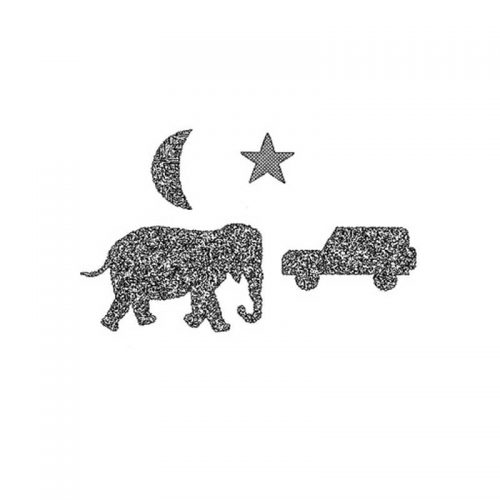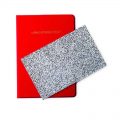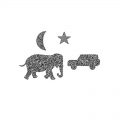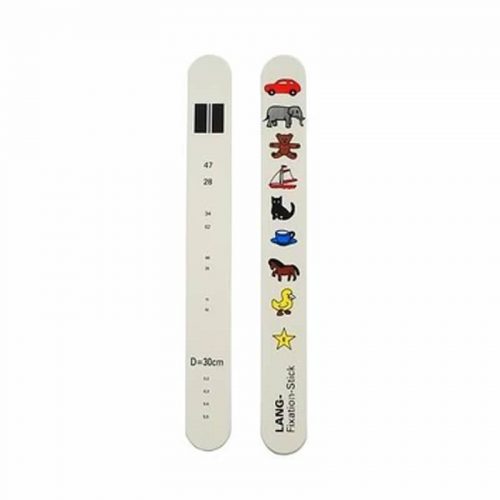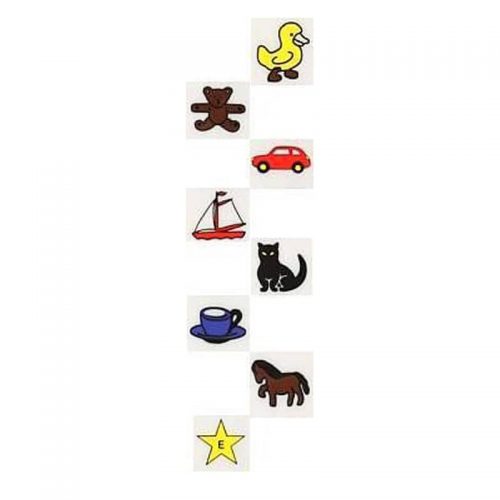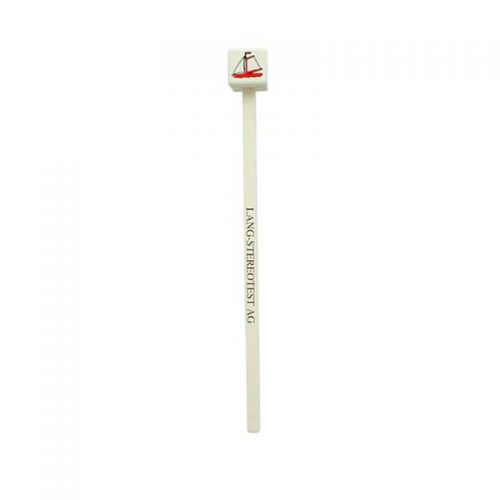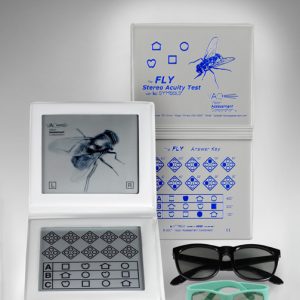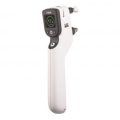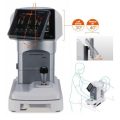The Lang-Stereotest® II is used to test binocular spatial vision (stereopsis) in infants, children and adults.
LANG-STEREOTEST® II
Target user group: Paediatrician, Paediatric ophthalmologist, Orthoptist, Optometrist, Optician
Main purpose: prevention or early detection of amblyopia.
Properties of the Lang-Stereotest® II:
▪ Eye test for testing stereopsis.
▪ Ideal for rapid differentiation of pseudostrabismus and true strabismus
▪ Contains 4 test figures: car, moon, elephant and star
▪ Fine disparity (600″, 400″ and 200 seconds of arc)
▪ No glasses required
▪ Contents: 1 chart (postcard size) in fold-out folder with instructions
In contrast to the Lang-Stereotest® I, it has a finer disparity and an additional symbol that can be recognised monocularly. The Lang-Stereotest® II is a further development of the Lang-Stereotest® I, which was developed by the Swiss ophthalmologist Joseph Lang.
The test displays a moon, a truck, an elephant and a star, each of them appearing on a different level, but only if the person has global stereopsis.The figures depicted are universal and understandable across cultures. When the test is viewed monocularly, the figures are camouflaged, except for the star.
The test is based on a combination of the random dot principle and the cylinder grid method (lenticular screen). It is ideally suited for testing children and adults who are already familiar with the LANG Test I with the figures star, cat and car.
The patient’s task is to recognise the figures that stand out from the background. The fourth object, the star, which can also be recognised with only one eye, promotes the attention of small children and simplifies the performance of the test in cases where stereopsis is lacking, as the recognition of the object conveys a sense of achievement.
Designed in Switzerland by LANG-STEREOTEST AG. All rights reserved.
REF 102, CE, Medical Device Class I


